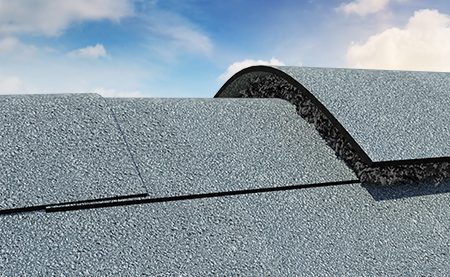Are You Missing the Sales Opportunity Created by the 2012 NFA Ventilation Codes?

In order to comply with post-2012 NFA ventilation codes, contractors have the opportunity secure additional work on re-roofing jobs.
By Andy Swan, Roof Saver
Prior to 2012 the International Residential Code (IRC) and International Building Code (IBC) allowed up to 80 percent of the total net free area (NFA) at the ridge of the roof. Industry feedback regarding snow and rain infiltration into the attic with this ratio prompted the IRC and IBC to change to code to allow at least 40 percent but not more than 50 percent of the total NFA at the ridge. In simple terms this increased the intake NFA at the soffit to allow more air to enter the low part of the attic and avoid the unintended weather infiltration.
Roofing contractors are now seeing many re-roofing jobs where the attic ventilation system was designed to the old code requirements. The ratio of Exhaust/ Intake NFA was installed to meet the old 80/20 limits of the code. The attic may lack the proper amount of soffit ventilation to create the required 40/60 or 50/50 ratio of exhaust to intake NFA. In order to comply with current code, contractors have the opportunity to educate the homeowner of the importance of proper attic ventilation, thus securing additional work related to the re-roofing job.
If you start to talk to homeowners about NFA and intake/exhaust ratios, their eyes will likely start to glaze over. Fortunately there are resources available that have already created the materials that explain the importance of proper attic ventilation in easy-to-understand, layman’s terms. Here are links to a few helpful articles:
- The importance of attic ventilation by the National Roofing Contractors Association on their Everybody Needs a Roof website.
- The importance of proper attic ventilation by the Asphalt Roofing Manufacturers’ Association.
Andy Swan is president of Blocksom and Co., manufacturer of Roof Saver Ridge Vent. For more information on Roof Saver visit www.roofsaver.com.








-2.png)










Comments
Leave a Reply
Have an account? Login to leave a comment!
Sign In